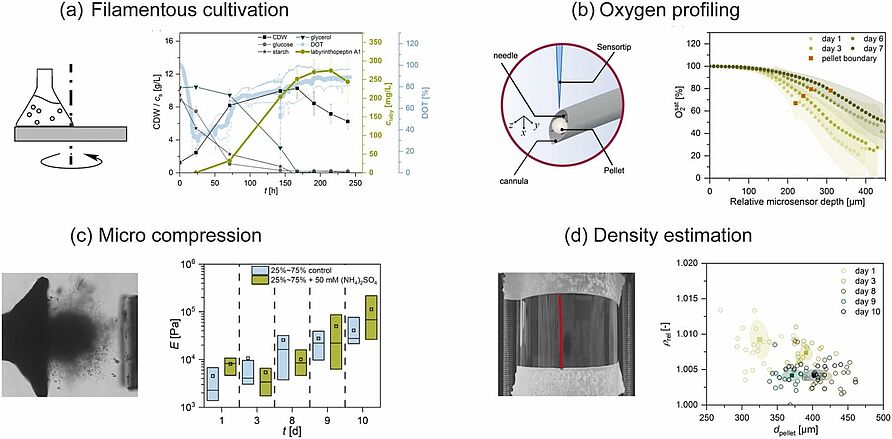Labyrinthopeptin A1, a promising broad-spectrum antiviral, is produced exclusively by the filamentous actinomycete Actinomadura namibiensis. Recent studies reported an up to 7-fold increase in product formation, along with increased glycerol consumption, lower dissolved oxygen tension, and changes in pellet morphology in A. namibiensis cultures supplemented with 50 mM ammonium sulfate. This study aims to elucidate the underlying mechanisms of this bioprocess intensification method using novel tools such as oxygen microprofiling, plate-plate compression, and sedimentation experiments to investigate pellet characteristics possibly associated with product formation. Oxygen microprofiling revealed steeper profiles in salt-supplemented pellets, indicating heightened metabolic activity and potential oxygen limitation in pellet cores during exponential growth phase, which affects the subsequent secondary metabolite production. For the first time, pellet density was estimated using sedimentation experiments. While control pellets showed no density trends, salt-supplemented pellets became more porous over time, suggesting a link to the increased glycerol uptake during product formation. Additionally, the compression experiments showed greater increase in stiffness in salt-supplemented pellets over time, suggesting the development of stiffer structures within the hyphal network and increased pellet stability. This observation was previously inferred only through image analysis and cell dry weight concentration. Ultimately, the results presented here contribute to the development of CFD-DEM simulations and predictive models for the productivity and growth behavior of filamentous pellet cultures in the future.
Z.Kozanecka, J.Liu, Q. Liu, H.Buch, J. Gebauer, D. Rasch, M. Böl, R. Krull
Increased labyrinthopeptin A1 production is associated with changes in oxygen supply, density and elasticity of Actinomadura namibiensis pellets
Biochemical Engineering Journal, in press, (2025) [Link]

